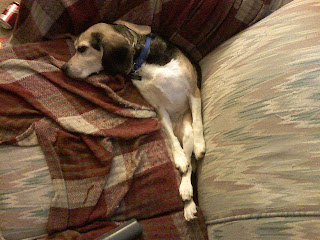I've been away from blogging the last month or so as my free time has been taken with a couple of new projects...not least of which is launching my new weather station! After hours of research, I settled on the
Vantage Pro 2 weather station from
Davis...purchased from
Ambient Weather. Ambient had a great selection and the best web prices I could find.
Unlike the cheaper (and more widely available) systems from La Crosse and Oregon Scientific, the VP2 makes the step up from hobby/curiosity to semi-professional. What separates these two levels is the
precision of their instruments. My goal was to get a system that had enough precision that I could join the NOAA
Citizen Weather Observer Program (CWOP). Through this program, NOAA collects data from weather stations all over the country and supplies the data to weather services and homeland security. There are over 4,500 registered stations world wide...and I'm
CW5491...the only station in the northern suburbs of Wilmington, DE. A huge collection of historical information is available for, scientists to study trends in our weather, for homeowners to decide if wind or solar energy is appropriate for their area and for planners to prepare for disasters like chemical spills or terrorist attacks.
Besides the hardware investment, it's necessary to find the right software to do something with all the raw data. I chose a package called
Weather Display. Not only does this software help you view your data, but it helps you share the data with others. I currently feed the CWOP,
Weather Underground,
Anything Weather and my
own site. This software makes it so easy to share my data with others. I haven't even begun to tap all of its features...like uploading webcam images in sync with the raw weather data and real-time data viewing.
I've got big plans for the future as well. In addition to what I already have, I want to add a web cam that will display the current weather conditions, a lightening detector (already purchased...I'm just working out the deployment) that can detect strikes out to 50 miles, a heated rain bucket so that I can accurately report snow fall and a solar sensor to accurately detect sunlight levels. All of this is expensive, so it'll have to happen over time, but I think that there are some practical applications for the expenditures as well. With all the monetary pressure that rising fuel prices are adding, I'm serious about finding alternate means to provide heat and electricity. We've already gone to a wood pellet stove to heat our home in the winter, so wind and solar are the big two in alternate energy forms left for us to explore. The data I collect over the next months and years will help us decide if either is appropriate to our location.


